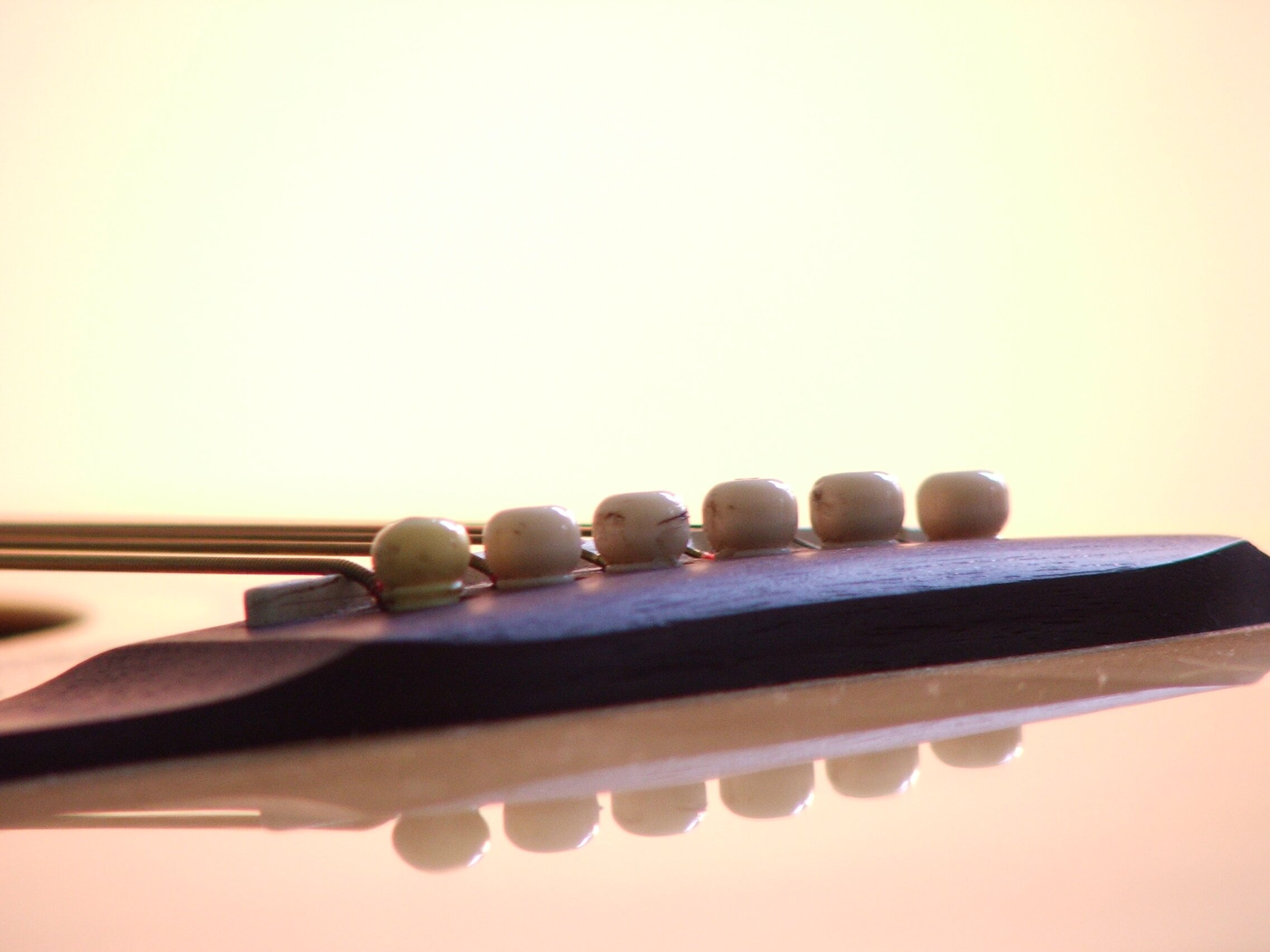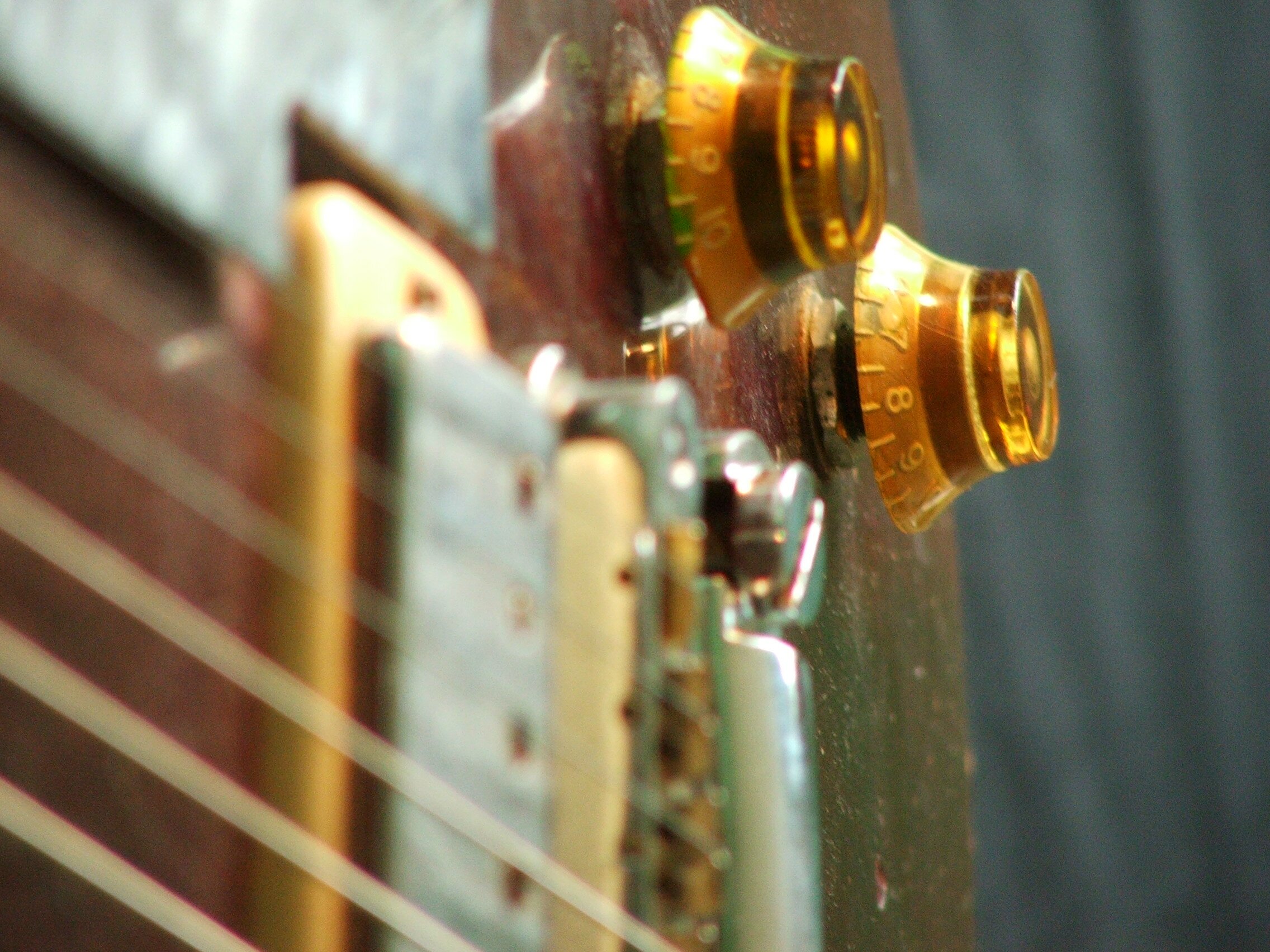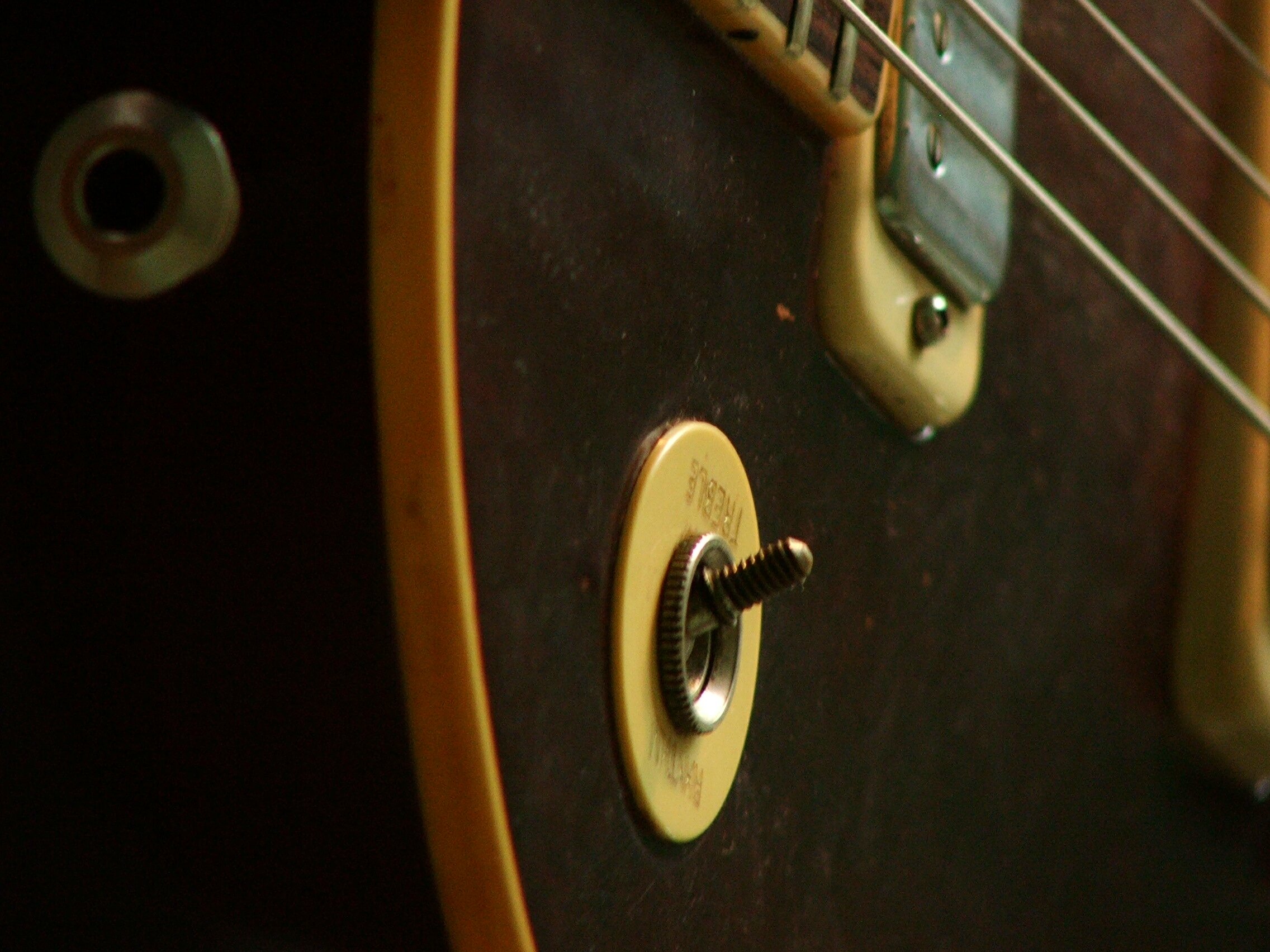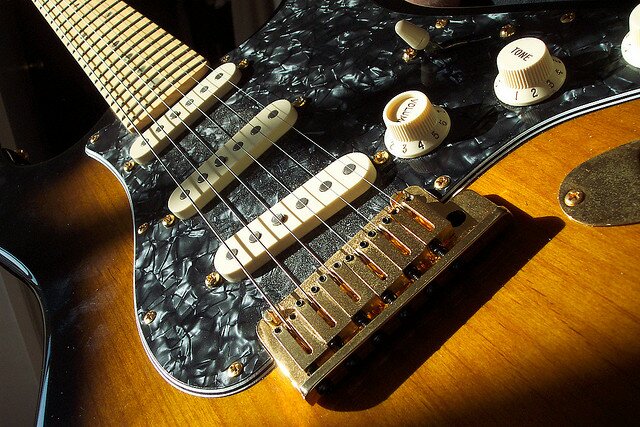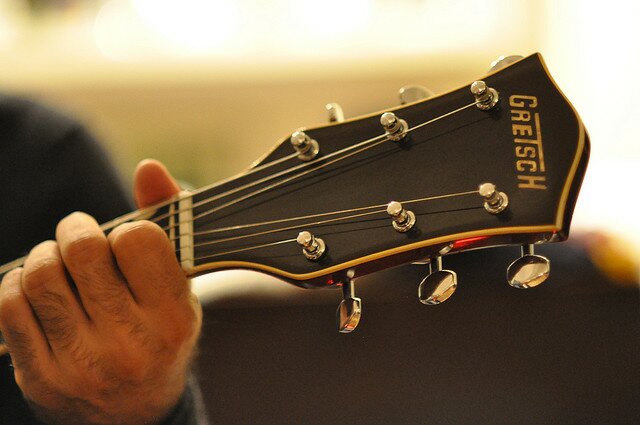Improvisation Techniques; String Bending, Vibrato, Slides, Hammer Ons and Pull Offs
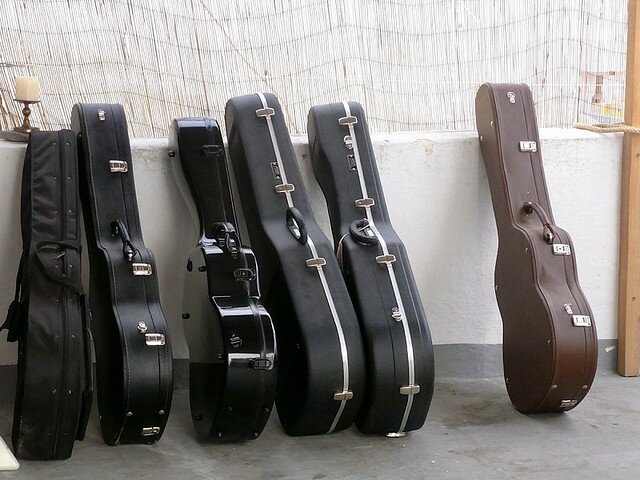
This lesson we will take a look at some techniques that can really enhance your improvisation. By applying these techniques to your improvisation, you will add more of your own character to your solos. Each individual player executes techniques like bends and vibrato slightly differently, thus adding to your own unique style.
For example, Garry Moore has a very accurate style of bending; his bends are always perfectly in tune and sound nice and smooth. Yet, take a listen to John Frusciante’s bending and you’ll find that his bends aren’t always quite in tune, or they sound a little rough around the edges… this just adds to his style. Try and aim to inject a bit of spirit into your playing. This can be far more effective than 100% perfection.
Bending
The technique of ‘bending’ is when a player pushes a string upwards to change the pitch of the note he is playing. You can bend your note up a semi-tone (1 fret), a full tone (2 frets) or as much as you fingers can handle!!! When bending a string with the third or fourth fingers, you can use the lower fingers on the string to add to the strength of your bend. Try not to bend using just the force from your fingers; try to use the strength of your whole arm, pivoting from the elbow.
Take a look at the video to see a full tone bend being executed:

The most important thing to consider when learning to bend notes is getting the pitch right. Every note on the guitar will require a different amount of pressure to bend it up to the desired note. This means that when bending notes, you need to develop and rely on being able to hear when a bent note is in tune, or if it’s out, how far out and in what direction so you know how to fix the problem.
A great exercise that can be used to practise this technique involves playing the note you want to bend to, moving down two frets and then attempting a bend to that note. This way you can continuously check whether you are getting the bend in tune or not. Take a look at the video and TAB to see how this exercise works.
Another great way to practice bends is to play a major scale on one string, but instead of playing the actual notes, use bends only!! The example below is using the C major scale on the 3rd string. Take a look at the TAB and the video to see this in action.
When bending a note, you can enhance the sound by playing the ‘target’ note on the string above the bend. For example, if you are bending the D on the 7th fret of the 3rd string up to E on the 9th Fret; play an E on the 5th fret of the 2nd string at the same time. As you bend the 3rd string, it will slowly come into tune with the E you are playing on the 2nd string. These bends are called ‘unison bends’. Take a look at the video and the TAB below to see how you can put unison bends into the major scale exercise.
Unison bends are a great way of practicing the pitch of your bends as you constantly have the ‘target note’ in the mix to check your bend against.
Vibrato
Vibrato is a slight but constant change in pitch of a note. Unlike bending when you change the pitch by half a tone or a full tone, here the change in pitch is much smaller. You can play vibrato fast or slow, it depends on what suits the song/solo/melody. It can be used anywhere and can really spice up a note that’s left ringing.
Many people talk about the ‘correct technique’ for vibrato, I personally think that you have to play the technique in the manner that is most comfortable to you. Your aim with vibrato is to make small changes in the pitch of a note by pushing the string upwards and downwards in a continuous motion.
The most important thing is to make sure that you pivot the hand from the wrist and keep the fingers locked in a solid position, rather than stretching your fingers up and down to bend the string.
Take a look at the video to see some vibrato in action.
Hammering on and Pulling off
A Hammer-on is when you play a note, then use another finger to sound a higher note without picking it. To do this you pick the first note, and then push another finger down onto a higher note. The force of the finger being brought down onto the string will create the sound. To make sure the hammered note is clear, it is important that you use a good amount of force with the hammer-on, and also that you use the tip of your finger as that should be the hardest surface of the finger.
Take a look at the video to see a hammer-on being played.
Again, let’s use the C major scale on the 3rd string to practice the hammer-ons. Take a look at the TAB and the video to see how this can be done:
A pull-off is the opposite to a hammer-on. Pick a fretted note and then pull the fretting finger down slightly and off the string, creating a plucking action with the fretting finger leaving the string, instead of the pick. The lower note is then sounded. If the lower note you require is not an open string then you will need to fret that note before the action of the pull-off begins. To create a clear, in tune pull-off, it is important that you put a good amount of pressure onto the lower note. Firstly; to make sure the lower note is clear when you pull-off, secondly; to make sure that you don’t pull the string out of tune when you execute the pull-off.
Take a look at the video to see a pull-off in action.
To practice the pull-offs, reverse the C major scale of the 3rd string and descend using pull-offs. Take a look at the video and the TAB to see how this is done:
And finally, let’s combine both the hammer-ons and the pull-offs to go up and down the C major scale. Both techniques will be used when both ascending and descending the scale. Once again, take a look at the video and TAB to see how this exercise can be done.
Want to start jamming some blues as a next step? Check out our post on one octave blues scales!
image credit – martin thomas







